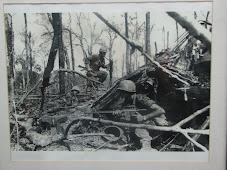People, Power and Politics in the Post War Period
Australia’s Role in the United Nations
- The UN was established at the end of World War II to prevent war and ensure the well-being and freedom of all peoples.
- It is made up of representatives from all around the world, with 190 members in 2003.
- Funding of the UN depends on the goodwill of member states.
- Its actions are based on the principles of the Universal Declaration of Human Rights.
- Australia was closely involved in the UN from the very start.
- Dr H.V. Evatt, Attorney-General and Minister for External Affairs in the Chifley Government, helped to write the charter of the UN and in 1948 and 1949 was the first president of the UN General Assembly, the body in which representatives of the member states meet.
- Australia has been involved in quite a few UN-led military actions.
- Some have been on a grand scale and subject to much debate in the community.
- The Korean War (1950–3) and the First Gulf War (1991), when Iraqi dictator Saddam Hussein’s forces were ousted from neighbouring Kuwait, are examples of such conflicts.
- In more recent years, Australia has been involved in UN peacekeeping missions.
- This has included the overseeing of free elections in Cambodia (1993), getting food aid into war-torn Somalia (1994) and freeing the East Timorese people from Indonesian-backed militia gangs (1999).
Questions
1. Why was the UN established?
2. List two roles H.V. Evatt played in the UN after the war.
3. List two UN backed military expeditions in which Australia has been involved. Include the dates.
Australia’s Role in UNESCO
- Military campaigns have not been the UN’s only work.
- Eighty per cent of the work is devoted to economic and social development in developing nations.
- Here, too, Australia’s role has been significant.
- Australia has had UN posts in the UN Commission on Human Rights, the International Court of Justice and the UN Commission on the Status of Women.
- Australia has been elected several times to the executive board of the United Nations Educational, Scientific and Cultural Organization (UNESCO).
- This last agency has been around as long as the UN itself.
- As well as providing educational facilities and technology to needy areas of the developing world, it has also endeavoured to preserve natural as well as cultural heritage sites around the world.
Question
What do the letters of UNESCO stand for? What is the aim of UNESCO?
Australia, Foreign Aid and the Colombo Plan
- One of the main features of Australia’s relations with nations in the Asia–Pacific region has been foreign aid.
- Our financial, technical, medical and educational assistance to needy countries has been through various agencies.
- The reasons for foreign aid are best summed up by the findings of one such review, in 1984: 1. Humanitarian assistance
- 2. Supporting Australia’s strategic interests
- 3. Promoting Australia’s commercial position overseas.
- In short, it has been in Australia’s long term interests for nations in the Asia–Pacific region to be politically stable and growing in prosperity.
- One of the most enduring of the foreign aid organisations to which Australia belongs is the Colombo Plan.
- This is an organisation that aims to improve the economic and social development of South-East Asian and Pacific nations.
- Set up in 1951, it was originally a group of seven Commonwealth nations and was chiefly concerned with emerging South Asian and South-East Asian Commonwealth states.
- It now has a far broader membership. Australia, New Zealand, Japan and the USA today provide most of the aid passing through the Colombo Plan.
- This includes education, health, food and training programs. Its headquarters are in Colombo, Sri Lanka.
Australia’s Role in APEC
- One of the more recent international organisations to which Australia belongs is APEC (Asia Pacific Economic Cooperation Group).
- Initiated largely by Australia, it was set up in 1989.
- Its main aim is to achieve free and open trade and investments among the countries sharing the Pacific region.
- This, it is hoped, will help reduce production costs and so create jobs and reduce the prices of goods and services among member states.
- In 1994, in Bogor, Indonesia, APEC leaders declared it their aim to have free and open trade and investment across the whole Asia–Pacific region by 2010.
Questions
1. What do the letters APEC stand for?
2. What is the aim of APEC?
Australia and UN Conventions
- The 1948 Universal Declaration of Human Rights was a statement of rights.
- Over the next half century, the UN incorporated these rights into international law through a number of conventions and treaties by which signatories agree to uphold principles protecting people’s human rights.
- Australia has ratified (made law) the two most important of these:
- The International Covenant on Civil and Political Rights and
- International Convenant on Economic, Social and Cultural rights.
- Australia’s family law enshrines the UN declaration of the Rights of the Child.
- The Racial Discrimination Act (1975) also enshrines the international convention on the Elimination of all forms of Racial Discrimination.
Question
How has Australia made incorporated UN Conventions into its policies and law
Subscribe to:
Post Comments (Atom)



No comments:
Post a Comment